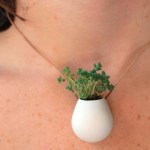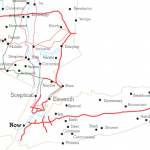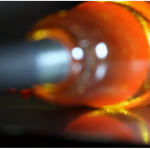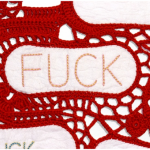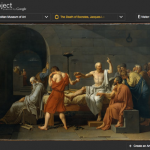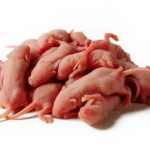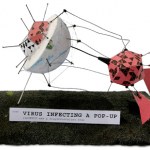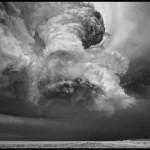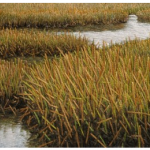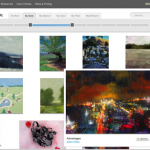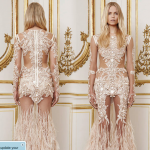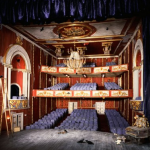Artists & Art
It's strangely artistic, like a Dutch still life: this disturbing short film by Sam-Taylor Wood defies our expectations of decomposition, as a rabbit churns with decay while a peach sitting nearby remains fresh. (Video below the fold, so as not to gross anyone out by surprise).
Via wouldn't you like to see something strange - there's a second video over there, though not as creepy as this one.
I'm too busy to write anything remotely interesting right now, so thanks, NYT & Bay Citizen, for filling the gap with an article about how Eadweard Muybridge. Best known for photo sequences capturing running horses and athletes, Muybridge bridged (ahem) art and science in his work, in addition to having a peculiar name*:
Like the multitudes of misfits who have been flocking to the Bay Area since the Gold Rush in search of a fresh start, Muybridge lived a life of constant artistic reinvention. He changed his name several times (he was born Edward Muggeridge in 1830 and eventually became…
A classic tale of love and sacrifice, illustrated by Sean Bieri:
While Bieri's artistry technically depicts a Christmas story, it also nicely captures the undying-even-while-decaying-putrefying-and-hemorrhaging-IQ-points nature of true love. What more could you want for Valentine's Day? (And let's face it, we've all had Valentine's Days that would arguably have been improved by a Zombocalypse.)
Speaking of which, I'm working on my review of Daniel Drezner's Theories of International Politics and Zombies. Short version: it's hilarious.
We've been buried under ice, snow, and slush up here in Massachusetts for months, and the chlorophyll deprivation is brutal. The other day I was chatting with someone, and he suddenly tuned out of our conversation, gazing into the distance wistfully. "Oh, sorry," he said, "I just noticed I can see some grass over there."
If only I'd known months ago about Colleen Jordan. Her tiny plant necklaces are little green reliquaries of summer, so you can always look down and see leaves - even in February in Boston.
Sadly, the necklaces (which are 3D-printed polymer and start at $55) don't come with…
Okay, I knew that planets are big, intellectually, but a well-done graphic is worth a thousand words, and a pretty HD video is even better. Brad Goodspeed made this video to suggest what other planets would look like, if they orbited Earth at the same distance as the Moon does. I've embedded it, but you should seriously watch it in HD, full-screen for maximum effect.
Scale from Brad Goodspeed on Vimeo.
I have nightmares like that. Seriously. But is the video accurate?
In addition to being full-on creepy, Brad's video produced a fascinating discussion in the comments and on various sites…
I get mail with wonderful links in it, but I'm hard pressed to find the time to post them, so my apologizes to those who've sent me things and not heard back. I'm beyond swamped. In the meantime, perhaps you'll enjoy these two nontraditional takes on "mapping." First up, map as music (or is it vice versa?):
"Conductor" by Alexander Chen
Conductor turns the New York subway system into an interactive string instrument. Using the MTA's actual subway schedule, the piece begins in realtime by spawning trains which departed in the last minute, then continues accelerating through a 24 hour loop.…
Don't look now, but the field of acoustic botany was just invented. It may take a while to catch on. Or grow. But it's a cool concept.
"Association, juxtaposition, metaphor is how the poet can go further than the scientist in addressing systems. The poet can legitimately juxtapose kelp beds with junkyards. Or to get really technical, reflect the water reservoir system for a large city in the linguistic structure of repetitive water-associated words in a poem. And poets right now are the only scientist-artists who can do these sorts of associations and get away with them--all other disciplines, such as biology, oceanography, mathematics are obligated to separate their ideas into discrete topics. You're not really allowed to…
"we find ourselves constantly experimenting and pushing the boundaries. . . the really great thing about our business is the fact that we take raw materials, and we design, we color, we make. . . and we have complete control of the process. It's very gratifying."
Danny Cooke, maker of the short documentary about glass painting that I featured last October, has a new short film to distract you this Sunday. It's about a team of glassblowers, Mark Tranter, Patricia Tranter-Edmonds, and Lee James, who set up a small studio in a historic stableyard in Cockington Village, UK. The first three…
PMS Quilt, 2008
hand embroidered and crocheted pantyliners
Laurel Roth
Yes, that is just what it says it is: a collection of pantyliners embroidered with profanity.
One thing is clear about artist Laurel Roth: she is not afraid to make viewers uncomfortable. Her series "Hope Chest" is constructed of hygenic accessories embroidered with "off-kilter reflections on biology, fertility, and the ever-changing roles of women" - like the f-word. Embellished with beads, rose thorns, and crochet, the embroideries are twee, kitschy decor - or they would be, if not for their bluntly worded messages.…
Experiencing late-afternoon unproductivity? Go play with Google Art Project and virtually tour the world's museums.
Update: NYT review.
Pinkies
from Food Chain: Encounters Between Mates, Predators and Prey by Catherine Chalmers
Photographer Catherine Chalmers (who may be best known in biology circles for her portraits of genetically modified mice) goes beyond brutal accuracy in her animal photography. Food Chain: Encounters Between Mates, Predators and Prey is a book of photos depicting predatory insects, frogs, and snakes devouring their living meals - including naked, squirming baby mice (above). It's no more than honest about what animals do and eat (yes, "cute" frogs will eat baby mice). But Chalmers' ordering and staging…
Is it advanced physics? biotech? fashion? Heck if I know.
"The Theory of Everything Disguised as a Handbag," from RandomIntent's etsy shop.
From NextNature, an intriguing post about the Institute for Digital Biology:
During the exhibition, visitors were able to feed a colony of microscopical pop-up creatures, save Chinese websites from a pageview-shortage, preserve an Amazone tribe from extinction by subscribing to its homepage and view a short documentary on how the living internet established itself.
Artist Walewijn den Boer also created a peculiar, twelve-minute faux-documentary, which uses animation to bring his digital biology concepts into meatspace (check it out below the fold).
Update 1:
I think the clunkiness of the…
It might look something like this:
Arm of God
Galacia, Kansas 2009Mitch Dobrowner
Those of you who enjoyed Sean Heavey's photos of storms in the American West may appreciate this epic, crisp black-and-white storm photography by Mitch Dobrowner.
Vapor Cloud
Near Clayton, New Mexico 2009
Mitch Dobrowner
In addition to his website, you can find Dobrowner's work at Ordover Gallery and John Cleary Gallery, among others. He will be exhibiting in April 2011 at Portland, Oregon's Blue Sky Gallery.
Via NOTCOT.
Autumn Salt Marsh 2
Linda Behar
I defy you to look at Linda Behar's embroidered marshlands and not be fooled into thinking they're photographs. To achieve this unusual level of textile realism, she prints photos taken on-site onto cloth, then improvises over them with embroidery. See more of her work on flickr.
Via Daily Art Muse.
TurningArt is a startup that lets you make a queue of prints by various independent artists, try the prints out in your home or office, and exchange them as often as you like. After you've lived with the print long enough, you can trade it in for the original canvas, watercolor or collage; you just pay the balance of the original's cost (and your subscription fees count as credit toward the purchase price).
Check out how it works, below the fold. . .
Easy, right? (As an artist, my anxieties are greatly allayed by the fact that they're shipping prints around in those tubes, not the…
Peter Eudenbach's mixed media artworks are inspired by technology gone right and gone wrong. Check out his coffee table that actually brews coffee, his Failed Attempt at Perpetual Motion, "based on a 16th century theory of perpetual motion that was never tested," or (euw) lead castings from the eye sockets of a human skull.
Isis the Laboratory Goddess sent me a Buzzfeed link featuring this incredible anatomical gown:
The artist/seamstress deserves credit for what appears to be an incredibly elaborate embroidered stiff satin gown that, on different panels, depicts circulatory, skeletal, muscular and pulmonary systems. Wow. I can't figure out who made it, so if you know the original source, please email me the link so I can update the post with the creator's information Mystery solved! The photo is by miyake juin, from a Fashion Week event at Shih Chien University. The gown's designer is Chinese; I direct you to…
The City: Majestic
miniature dioramaLori Nix, 2006
The Ruins of Detroit: United Artists Theater
photograph
Yves Marchand & Romain Meffre, 2010
Is urban decay beautiful, heartwrenching, or both?

